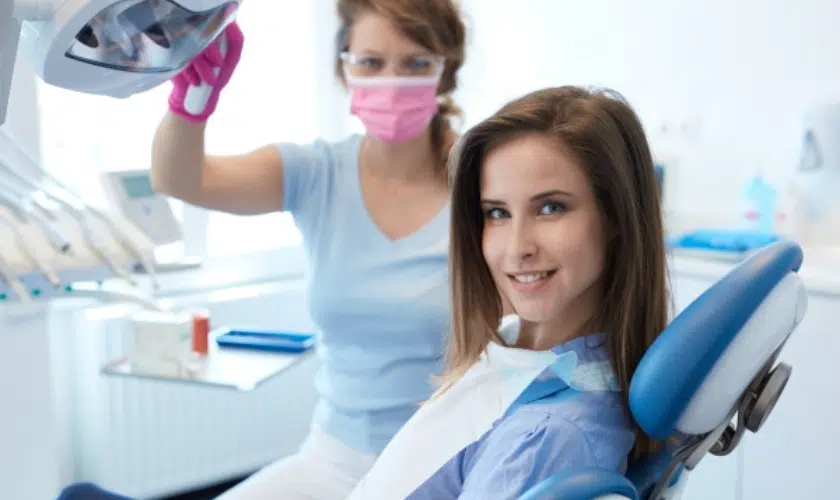
From Brace Face to Confident Grin: A Closer Look at the Power of Adolescent Orthodontics
Smiles are like superpowers, capable of transforming not just our appearance but also our confidence. And while braces may have once been synonymous with the awkward teenage years, today they hold the key to unlocking a confident grin that will last a lifetime. In this captivating blog post, we delve into the world of adolescent orthodontics, exploring how these modern marvels can bridge the gap between self-consciousness and unstoppable confidence. So brace yourself for an enlightening journey as we uncover the transformative power behind those stainless steel wonders – from brace face to radiant smile!Introduction to Orthodontics
Adolescent orthodontics is a field of dentistry that deals with the diagnosis and treatment of dental and facial irregularities in adolescents. It is also concerned with the prevention of these problems in young children. Orthodontists use a variety of appliances, such as braces, to align the teeth and jaws in order to create a more balanced smile. While many people associate adolescent orthodontics with metal braces, there are actually a variety of different appliances that can be used to correct dental and facial irregularities. Invisalign® clear aligners are becoming increasingly popular among teenagers, as they offer a more aesthetically-pleasing alternative to traditional metal braces. No matter what type of appliance is used, adolescent orthodontics can have a profound impact on a teenager’s self-esteem and confidence. A beautiful smile is often seen as a sign of health and attractiveness, so straightening one’s teeth can lead to improved self-image and an overall boost in confidence. In addition, correcting dental and jaw irregularities can improve one’s bite function and oral hygiene habits, leading to better overall oral health.Types of Braces Used in Teenage Orthodontics
There are many types of braces used in adolescent orthodontics, each with its own benefits. The most common type of braces is metal braces, which are made of stainless steel. Metal braces are strong and durable, and they can be adjusted to give the wearer the best possible results. Ceramic braces are another option for adolescents. Ceramic braces are made of clear or tooth-colored material, making them less noticeable than metal braces. Invisalign® is a type of clear aligner that is also virtually invisible when worn. Invisalign® aligners are custom-made for each individual and gradually shift teeth into alignment over time. Whichever type of braces you choose, your orthodontist will work with you to ensure that you get the best possible results.Benefits of Adolescent Orthodontic Treatment
Adolescent orthodontic treatment can offer a number of benefits for patients. First, it can help to improve the alignment of the teeth and jaws, which can in turn improve the patient’s bite. Secondly, it can also improve the cosmetic appearance of the teeth and smile. Treatment can also help to prevent or reduce the likelihood of future dental problems, such as tooth decay or gum disease. Adolescent orthodontic treatment can boost patients’ self-esteem and confidence, particularly during an important time in their lives when they are developing their identity.Common Questions from Parents and Teens about Adolescent Orthodontics
A lot of parents and teens have questions about adolescent orthodontics. Here are some of the most common questions we hear: 1. Why is it important to get orthodontic treatment during adolescence? It’s important to get orthodontic treatment during adolescence because this is when the bones are still growing and are more pliable. This means that the teeth can be moved into the correct position more easily. Treatment during adolescence can also help to prevent future problems with the teeth and jaws. 2. Will my child need to wear braces for a long time? The length of time that your child will need to wear braces will depend on the severity of their condition. In most cases, braces are worn for around 18 months to 2 years. However, some people may need to wear them for longer if their teeth are very crowded or they have other complex issues.How to Choose the Right Type of Brace for Your Teenager
Different types of braces can be used to treat various orthodontic issues in teenagers. The type of brace that is right for your teenager will depend on the severity of their orthodontic issue and what type of results you are hoping to achieve. Here are some of the most common types of braces that are used to treat teenage patients: -Traditional Metal Braces: Metal braces are the most common type of braces and are often seen as the standard choice for teens. They are made up of metal brackets that are bonded to the teeth, and a thin wire that runs through the brackets to move the teeth into place. While they may not be the most aesthetically pleasing option, they are very effective at treating a wide range of orthodontic issues. -Clear/Ceramic Braces: Clear or ceramic braces work in the same way as metal braces, but they use clear brackets instead of metal ones. This makes them much less visible, which can be a big plus for teens who are self-conscious about their appearance. However, they do require more care and attention than metal braces, so your teen will need to be diligent about brushing and flossing around them. -Invisalign®: Invisalign is a popular alternative to traditional braces that uses clear, removable aligners instead of brackets and wires. Because they are removable, teens can take them out for special occasions or when they need to brush and floss their teeth (Aftercare and Maintenance Guidelines
There are a few things to keep in mind when it comes to taking care of your child’s teeth during and after orthodontic treatment: 1. Make sure they brush and floss regularly. This is important for both maintaining their oral health during treatment and making sure their smile stays looking great once the braces come off. 2. Help them avoid hard or sticky foods that can damage their braces. sugary drinks should also be avoided, as they can contribute to tooth decay. 3. Keep an eye on their rubber bands and other braces accessories, as they may need to be replaced from time to time. 4. Schedule regular check-ups with their orthodontist so that any necessary adjustments can be made. Following these guidelines will help ensure that your child’s smile stays healthy and beautiful throughout their orthodontic journey! It’s clear to see that adolescent orthodontics is a powerful tool to help young people move from feeling insecure about their smiles to feeling confident and smiling brightly. With modern advancements in braces technology, it has never been easier or more comfortable for teens to get the smile of their dreams. In addition, orthodontic treatments offer more than just beautiful straight teeth – they can also be used as an important preventative measure to guard against potential oral health issues later on. Ultimately, adolescent orthodontics are a great way for parents and teenagers alike to invest in their futures and ensure that everyone feels good about smiling broadly!Tags: Adolescent Orthodontic
